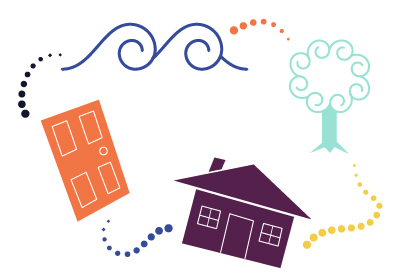How to talk to a Butterfly
O ne story welcomes another. When one story is told, it becomes a haven and a habitat for the next one, and the next. Human beings are blessed with this marvelous gift of being able to weave an impromptu tapestry of interconnected tales, linked by the simple phrase: That reminds me.
This is what happens on a good day of storytelling on the 4th floor at Baycrest Health Sciences. The 4th floor is the psychiatry unit where I work as Baycrest’s storyteller-in-residence, hosting storytelling sessions twice a week.

One day we were talking about the idea of sanctuary. At some point the discussion opened into memories of places where the people in the group felt at peace. People spoke about being in their bedrooms with the doors closed, others about being in their bedrooms with their doors open. They spoke about listening to the ocean, being at their cottage, meditating in a city park. Then someone mentioned birds and butterflies. One man had once learned to whistle many bird songs. He gave an example, and the room quieted with wonder.
Someone else spoke about the squirrels who counted on the bagels he fed them every morning. Others, of walking in the ravines when they needed to feel at peace. Then E. told a story. “I like to listen to the Blue Jays,” he began, “but the reception isn’t very good on my farm.” He meant the baseball team, not the birds. He had purchased a 250 acre farm near Bancroft, and it was his getaway from his high-powered city life. He liked baseball, and loved to listen to the Blue Jays games on the radio. The only place he got reasonable reception was in a clearing on the property. One day he was out there trying to catch a game when he noticed a Monarch butterfly alighting on a nearby tree. He decided to speak to the butterfly. He indicated his knee and said, “I’d like you to join me. You can land right here. It’s as safe as you’d want it to be.” Nothing happened. He spoke again, and again the butterfly stayed on its perch. But the third time he invited it, the butterfly spread its fine orange and black wings and fluttered over and landed on his right knee.
The story hit home. Everyone on the 4th floor is seeking a sanctuary where they, too, can be as safe as they need to be. The story was followed, as often happens, by a thoughtful, unhurried silence. Then the hour was up, the psychiatric social worker came in to lead a meeting, and I left the room.

When I first met him, E. was habitually and deeply silent, sunken and suppressed by the undertow of sorrow. The Occupational Therapist who invites me into the group told me afterwards this was the most he had spoken since coming for treatment. He must have heard and responded to something in the stories that had gone around that day, and it became the welcome he needed to give utterance to his remarkable tale.
When people leave the program after their four months of treatment, do the story-seeds keep growing into their real lives? I hope that E., like the others, will return to his life outside of the hospital with a newfound spark of possibility. Whatever happens next, this heroic, articulate man, knocked utterly flat by illness, has now remembered a time when he could speak to a butterfly, and that the butterfly listened. And this wondrous ability to communicate beyond the customary bandwidth of human understanding just may hold a clue for the future, not only for the Baycrest patients but for all of us. For if a human being has even once in his life spoken the language of butterflies – those fragile, unlikely masters of transformation and long journeys – perhaps he can slowly regain the ability to imagine for himself a new story of hope and change.
©2018 STORYCARE. Website by furia.ca